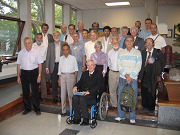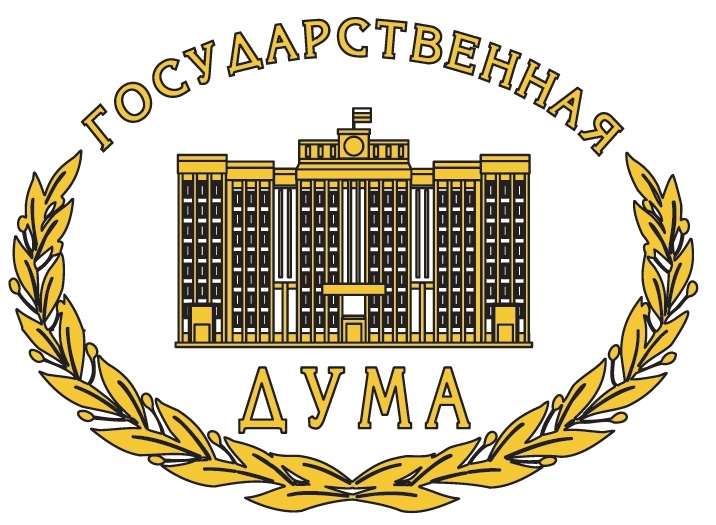



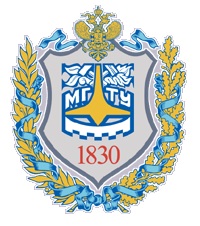
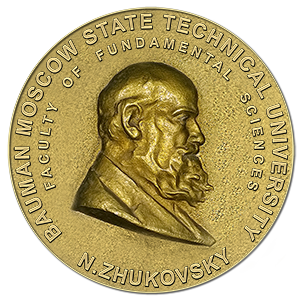
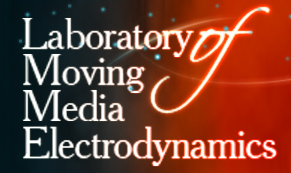
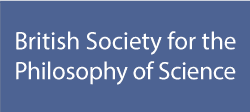
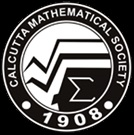

Bauman Moscow State Technical University
5, 2-nd Baumanskaya street, Moscow, 105005 Russia
International Meeting
Physical Interpretations of Relativity Theory - 2015
Devoted to the 50th Anniversary of the Scientific and Educational Division ¬ЂFundamental Sciences¬ї of the Bauman Moscow State Technical University
29 JuneвАУ02 July, 2015
Moscow, Rubtsovskaya nab., 2/18- Photos
- International Organising Committee
- Academician Committee
- Foundation Support
- Informing Letters
- Participants
- General programm
- Scientific program
- Talks
- BMSTU
- Laboratory Building of BMSTU
- Department of Physics
- Transport to BMSTU
- Accommodation
- Registration Fee
- Auditorium
- Permission, visa
- Invitation
- Cultural program
- Meal
- Translation (Interpretation)
- Moscow PIRT Proceedings
- Format for abstracts and papers

Photos
International Organising Committee
- Prof. A.A. Aleksandrov (Chairman), Bauman MSTU, Moscow, Russia
- Prof. V.O. Gladyshev (Co-Chairman), Bauman MSTU, Moscow, Russia
- Prof. P. Rowlands (Co-Chairman), University of Liverpool, Liverpool, United Kingdom
- Prof. J.B. Almeida, University of Minho, Physics Department, Braga, Portugal
- Prof. I.A.Arkharov, Bauman MSTU, Moscow, Russia
- Prof. D. Blair, University of South Western Australia, Australia
- Prof. G.Yu. Bogoslovsky, Skobeltsyn Institute of Nuclear Physics, Lomonosov Moscow State University, Russia
- Prof. S.V. Chervon, Ulyanovsk State University, Ulyanovsk, Russia
- Prof. A.D. Dolgov, Institute of Theoretical and Experimental Physics of RAS, & INFN, Ferrara, Italy
- Prof. M.C. Duffy, University of Sunderland, Sunderland, British Society for the Philosophy of Science, United Kingdom
- Dr. A.P. Fournier-Sikr, European Space Agency, France
- Prof. M.E. Gertsenshtein, D.V. Skobeltsyn Nuclear Physics Institute of Moscow State University, Russia
- Prof. R.G. Zaripov, Kazan Scientific Center, RAS, Kazan, Russia
- Prof. G.N. Izmailov, Moscow Aviation Institute, Moscow, Russia
- Prof. V.N. Lukash, Astro Space Center of P.N. Lebedev Physical Institute of RAS, Russia
- Prof. H.P. Mazumdar, Physics and Earth Sciences Division, Indian Statistical Institute, Kolkata, India
- Prof. V.N. Melnikov, Centre for Gravitation and Fundamental Metrology, VNIIMS and Institute of Gravitation and Cosmology, Peoples' Friendship University of Russia, Moscow, Russia
- Prof. A.N. Morozov, Bauman MSTU, Moscow, Russia
- Prof. E. Mychelkin, Fesenkov Astrophysical Institute NAS RK, Almaty, Kazakhstan
- Prof. S.V. Siparov, Academy of Civil Aviation, S.-Petersburg, Russia
- Prof. R.M. Santilli, Institute for basic research, Palm Harbor, USA
- Prof. Yu.S. Vladimirov, Lomonosov Moscow State University, Moscow, Russia
- Prof. G.M. Webb, Commercial Space Technologies Ltd., London, Great Britain
- Dr. M. Wright, Berbeck College, London University, London, Great Britain
- N.D. Tyannikova (Scientific secretary), Bauman MSTU, Moscow, Russia
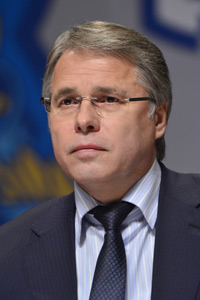
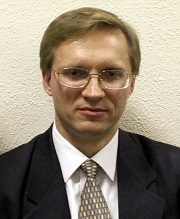
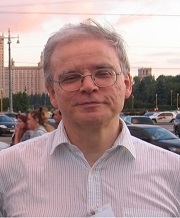
Academician Committee (International Advisory Council)
- Member of RAS, Prof. V.I. Pustovoit (Chairman), Science Technological Center of Unique Instruments of RAS, Moscow, Russia
- Prof. A.N. Morozov (Co-Chairman), Bauman MSTU, Moscow, Russia
- Prof. J.B. Almeida, University of Minho, Physics Department, Braga, Portugal
- Member of RAS, Bagaev Sergei N., Institute of laser physics SB RAS, Novosibirsk, Russia
- Prof. C. Bradaschia, Istituto Nazionale di Fisica Nucleare INFN), e Laboratorio di Fisica Sperimentale del dipartimento di Fisica, Universita di Pisa, S. Piero a Grado (Pisa) Italy
- Prof. B.M. Bolotovskii, Lebedev Physical, Institute of RAS, Moscow, Russia
- Prof. D. Blair, University of South Western Australia, Australia
- Prof. S.V. Chervon, Ulyanovsk State University, Ulyanovsk, Russia
- Prof. Adalberto Giazotto, INFN - Sezone di Piza, Pisa, Italia
- Prof. Yu.S. Vladimirov, Moscow State University, Moscow, Russia
- Prof. A.D. Dolgov, Institute of Theoretical and Experimental Physics of RAS, & INFN, Ferrara, Italy
- Prof. M.C. Duffy, University of Sunderland, Sunderland, United Kingdom
- Member of RAS, Prof. I.B. Fedorov, Bauman MSTU, Moscow, Russia
- Prof. M.E. Gertsenshtein, D.V. Skobeltsyn, Nuclear Physics Institute of Moscow State University, Russia
- Prof. V.O. Gladyshev, Bauman MSTU, Moscow, Russia
- Prof. R.G. Zaripov, Kazan Scientific Center, RAS, Kazan, Russia
- Prof. G.N. Izmailov, Moscow Aviation Institute, Moscow, Russia
- Member of RAS, Prof. N.S. Kardashev, Astro Space Center of P.N. Lebedev Physical Institute of RAS, Russia
- Prof. V.N. Lukash, Astro Space Center of P.N. Lebedev Physical Institute of RAS, Russia
- Prof. H.P. Mazumdar, Physics and Earth Sciences Division, Indian Statistical Institute, Kolkata, India
- Prof. V.N. Melnikov, Centre for Gravitation and Fundamental Metrology, VNIIMS and Institute of Gravitation and Cosmology, Peoples' Friendship University of Russia, Moscow, Russia
- Prof. V.N. Mitrokhin, Department of Radio-electronic systems and devices, Bauman MSTU, Moscow, Russia
- Prof. E. Mychelkin, Fesenkov Astrophysical Institute NAS RK, Almaty, Kazakhstan
- Prof. C. Romero, Universidade Federal da Paraiba, Departamento de Fisica, Joao Pessoa, Brazil
- Prof. P. Rowlands, University of Liverpool, Liverpool, United Kingdom
- Corr.-Member of RAS, Prof. N.N. Rozanov, Saint Petersburg National Research University of Information Technologies, Mechanics and Optics; Vavilov State Optical Institute
- Prof. V.N. Rudenko, Sternberg State Astronomical Institute, Lomonosov Moscow State University, Moscow, Russia
- Prof. R. Triay, Centre de Physique Theorique CNRS - University de Provence, Marseille, France
- Prof. J. Hough, Department of Physics and Astronomy, University of Glasgow, Glasgow, U.K.
- Prof. R. Weiss, Department of Physics, Massachusetts Institute of Technology, Cambridge, U.S.A.
- Prof. S. Whitcomb, Physics/LIGO laboratory, California Institute of Technology, Pasadena, U.S.A.
- Prof. N. Deruelle, Institut des Hautes Etudes Scientifiques, Bures sur Yvette, France
- Prof. G. Pizzella, Physics Department, University of Rome, Rome, Italy
- Prof. D. Shoemaker, PMIT LIGO Laboratory, Massachusetts Institute of Technology, Cambridge, U.S.A.
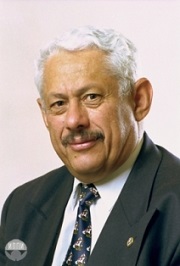

Foundation Support
- The State Duma Committee on Education of the Russian Federation
- Department of Physics, University of Liverpool, Great Britain
- S.C.&T., University of Sunderland, Great Britain
- Russian Gravitational Society
- Moscow Physical Society
- The International Society on General Relativity & Gravitation
- British Society for the Philosophy of Science
- Calcutta Mathematical Society
First informing letter
Participants
- Aleksandrov A.A., Bauman Moscow State Technical University, Moscow, Russia
- Almeida J.B., University of Minho, Physics Department, Braga, Portugal
- Antonyuk P. N., Bauman Moscow State Technical University, Moscow, Russia
- Bagaev Sergei N., Institute of laser physics SB RAS, Novosibirsk, Russia
- Blair D., University of South Western Australia, Australia
- Bogoslovsky G.Yu., Skobeltsyn Institute of Nuclear Physics, Lomonosov Moscow State University, Russia
- Bolotovskii B.M., Lebedev Physical, Institute of RAS, Moscow, Russia
- Bradaschia C., Istituto Nazionale di Fisica Nucleare INFN, e Laboratorio di Fisica Sperimentale del dipartimento di Fisica, Universita di Pisa, S. Piero a Grado (Pisa) Italy
- Bronnikov K.A., Institute of gravitation and cosmology, PeoplesвАЩ Friendship University of Russia, Moscow, Russia
- Chelnokov M., Department of Physics, Bauman Moscow State Technical University, Moscow, Russia
- Chervon S.V., Ulyanovsk State University, Ulyanovsk, Russia
- Deruelle N., Institut des Hautes Etudes Scientifiques, Bures sur Yvette, France
- Dolgov A.D., Institute of Theoretical and Experimental Physics of RAS, & INFN, Ferrara, Italy
- Duffy M.C., University of Sunderland, Sunderland, United Kingdom
- Fedorov I.B., Bauman Moscow State Technical University, Moscow, Russia
- Fomin I.V., Department of Physics, Bauman Moscow State Technical University, Moscow, Russia
- Giazotto A., INFN - Sezone di Piza, Pisa, Italia
- Gladyshev V.O., Department of Physics, Bauman Moscow State Technical University, Moscow, Russia
- Gladysheva T.M., Department of Physics, Bauman Moscow State Technical University, Moscow, Russia
- Gorelik V.S., Lebedev Physical Institute, Moscow, Russia
- Hough J.
- Ivashchuk V.D., Center for Gravitation and Fundamental Metrology, VNIIMS; Institute of Gravitation and Cosmology, Peoples' Friendship University of Russia, Moscow, Russia
- Izmailov G.N., Moscow Aviation Institute, Moscow, Russia
- Jimenez Carlos Barcelona Technical University, Spain
- Kardashev N.S., Astro Space Center of P.N. Lebedev Physical Institute of RAS, Russia
- Kassandrov Vladimir V., PeoplesвАЩ Friendship University of Russia, Moscow, Russia
- Konstantinov M.Yu., Department of Physics, Bauman Moscow State Technical University, Moscow, Russia
- Korotaev S.M., Geoelectromagnetic Research Centre of Schmidt Institute of Physics of the Earth, Moscow; Department of Physics, Bauman Moscow State Technical University, Moscow, Russia
- Koryukin V.M., Department of Physics and Mathematics, Mari State University, Yoshkar-Ola, Russia
- Krysanov V.A., Institute for Nuclear Research RAS, Sternberg Astronomical Institute Moscow State University, Moscow, Russia
- Kudriavtcev Yu.S., St-Petersburg, Russia
- K–∞uts V.L., Astro Space Center of Lebedev Physical Institute, Moscow; Department of Physics, Bauman Moscow State Technical University, Moscow, Russia
- Lebedev Yury, Bauman Moscow State Technical University, Moscow, Russia, International Center for Everettic Studies, Israel
- Lemos Jose P. S., Instituto Superior Tecnico, Lisboa, Portugal
- Levin S.F., Moscow Institute for expertise and tests, cathedra of metrology and metrological support, Moscow, Russia
- Lukash V.N., Astro Space Center of Lebedev Physics Institute, Moscow, Russia
- Mazumdar H.P., Physics and Earth Sciences Division, Indian Statistical Institute, Kolkata, India
- Melnikov V.N., Institute of gravitation and cosmology, PeoplesвАЩ Friendship University of Russia, Moscow, Russia
- Mitrokhin V.N., Department of Radio-electronic systems and devices, Bauman Moscow State Technical University, Moscow, Russia
- Morozov A.N., Bauman Moscow State Technical University, Moscow, Russia
- Mychelkin E., Fesenkov Astrophysical Institute NAS RK, Almaty, Kazakhstan
- Novikov I.D., Astro Space Center Lebedev Physical Institute of RAS, Moscow, Russia
- Petrov A.N., Sternberg Astronomical institute, Lomonosov Moscow State University, Moscow, Russia
- Petrova Mariia G., P.N. Lebedev Physical Institute of the Russian Academy of Sciences, Moscow, Russia
- Pizzella G., Physics Department, University of Rome, Rome, Italy
- Portnov D.I., Department of Physics, Bauman Moscow State Technical University, Moscow, Russia
- Pustovoit V.I., Science Technological Center of Unique Instruments of RAS, Moscow, Russia
- Romero C., Universidade Federal da Paraiba, Departamento de Fisica, Joao Pessoa, Brazil
- Rowlands P., Department of Physics, University of Liverpool, Oliver Lodge Laboratory, Liverpool, UK
- Rudenko V., Institute for Nuclear Research of the RAS, Moscow, Russia; Sternberg Astronomical Institute, Lomonosov Moscow state university, Russia
- Sami M., Kobayashi-Maskawa Institute for the Origin of Particles and the Universe, Nagoya University, Nagoya, Japan; Centre for Theoretical Physics, Jamia Millia Islamia, New Delhi, India
- Shahalam M., Centre for Theoretical Physics, Jamia Millia Islamia, New Delhi, India
- Sharandin Ye.A., Bauman Moscow State Technical University, Moscow, Russia
- Shestakova T.P., Department of Theoretical and Computational Physics, Southern Federal University, Rostov-on-Don, Russia
- Siparov S.V., Department of Physics, State University of Civil Aviation, St-Petersburg, Russia
- Tiunov P.C., Department of Physics, Bauman Moscow State Technical University, Moscow, Russia
- Triay R., Centre de Physique Theorique CNRS - University de Provence, Marseille, France
- Urasov N.I., Department of Physics, Bauman Moscow State Technical University, Moscow, Russia
- Vargashkin V.Ya., Department of Physics, State University вАУ Educational Scientific and Industrial Center, Orel, Russia
- Verma M.M., Department of Physics, Lucknow University, Lucknow, India
- Vladimirov Yu.S., Moscow State University, Moscow, Russia
- Weiss R., Department of Physics, Massachusetts Institute of Technology, Cambridge, U.S.A.
- Whitcomb S., Physics/LIGO laboratory, California Institute of Technology, Pasadena, U.S.A.
- Wright M., Berbeck College, London University, London, Great Britain
- Zakirov Ural, Department of astronomy and space geodesy, Kazan University, Kazan, Russia
- Zaripov R.G., Kazan Science Center, Institute of Mechanics & Machinery, Russian Academy of Sciences, Kazan, Russia
- Zhotikov V.G., Moscow Institute for Physics and Technology, Dolgoprudny, Russia
- Balan V., University Politehnica of Bucharest, Romania
- Sankar Hajra, Calcutta Mathematical Society, India
- Burinskii A., Nuclear Safety Institute Russian Academy of Sciences, Russia
- Tarkhanov N., University of Potsdam, Potsdam, Germany
- Tuan Pham Minh, Belgorod State National Research University, Russia
- Kudriavtcev Iu., Russia
- Meierovich B.E., P.L. Kapitza institute for physical problems, Russia
- Prof. G.M. Webb, Commercial Space Technologies Ltd., London, Great Britain
- Dr. A.P. Fournier-Sikr, European Space Agency, France
- Shatskiy A., Lebedev Physical Institute of RAS, Russia
- Majumdar A.S., S. N. Bose National Centre for Basic Sciences, India
- Lo C. Y., Applied and Pure Research Institute , USA
- Fomin I.V., Bauman Moscow State Technical University, Russia
- Sanjay Sarwe, St. Francis De Sales College, India
- Balitsky Ja. V., Moscow Institute of Physics and Technology, Russia
- Wagh S., Central India Research Institute, India
- Chervon S., Ilya Ulyanov State Pedagogical University, Russia
- Pavlov A., Moscow Timiryazev Agricultural Academy, Russia
- Ajay K.S., Science Section Department of Education, India
- Abul K.M. Masood-ul-Alam, Tsinghua University, China
- Lukanenkov A. V., Russia
- Chelnokov M., Bauman Moscow State Technical University, Russia
- Koryukin V.M., Koryukin A.V., Mari State University, Russia
- Lebedev Yu.A., Bauman Moscow State Technical University, Russia
- Vertogradov V.D., Herzen State Pedagogical University of Russia, Russia
- Khalid Saifullah, Quaid-i-Azam University, Pakistan
- Siddiqui A.A., National University of Sciences and Technology (NUST), Pakistan
- Rylov Yu.A., Institute for Problems in Mechanics, Russian Academy of Sciences, Russia
- Shestakova T. P., Southern Federal University, Russia
- Kiktenko E.O., Bauman Moscow State Technical University, Geoelectromagnetic Research Centre of Schmidt Institute of Physics of the Earth, RAS, Russia
- Korotaev S.M., Bauman Moscow State Technical University, Geoelectromagnetic Research Centre of Schmidt Institute of Physics of the Earth, RAS, Russia
- Victor de Haan, Bon Physics Research and Investigations BV, The Netherlands
- Kassandrov V.V., Peoples' Friendship University of Russia, Russia
- Andreev V., Lebedev Physical Institute of RAS, Russia
- Kassandrov V.V., Peoples' Friendship University of Russia, Russia
- Andreev V., Lebedev Physical Institute of RAS, Russia
- Petrova L.I., Moscow State University, Russia
- Konstantinov M.Yu., Bauman Moscow State Technical University, Russia
- Shishanin A.O., Bauman Moscow State Technical University, Russia
- Boriev I.A., The Branch of Talrose Institute for Energy Problems of Chemical Physics of RAS, Russia
- Jerzy Filus, Oakton Community College, USA
- Stepanova T.R., Peter the Great St. Petersburg Polytechnic University, Russia
- Vahhi E.N., Peter the Great St. Petersburg Polytechnic University, Russia
- Fil'chenkov M.L., Peoples' Friendship University of Russia, Russia
- Laptev Yu.P., Peoples' Friendship University of Russia, Russia
- Dumin Yu.V., Lomonosov Moscow State University, Russia
- Zhotikov V.G., Moscow Institute for Physics and Technology (Government University), Russia
- Baranov A.M., Krasnoyarsk State Pedagogical University named after V.P.Asta, Russia
- Tomilin K. A., IHST RAS, Russia
- Babourova O.V., Moscow State Pedagogical University, Russia
- Frolov B.N., Moscow State Pedagogical University, Russia
- Romanova E.V., Moscow State Pedagogical University, Russia
- Zaigrova V.V., Moscow State Pedagogical University, Russia
- Konovalov V.V., Ministry of finance of Permsky Kray, Russia
- Wallis M.K., University of Buckingham, United Kingdom
- Marshall T.V., University of Buckingham, United Kingdom
- Siparov S.V., Saint Petersburg State University of Civil Aviation, Saint Petersburg National Research University of Information Technologies, Mechanics and Optics, Russia
- Kuznetsov S.I., Web-Institute for Time Nature Explorations, Russia
- Izma√ѓlov G N., Moscow Aviation Institute, Russia
- Tskhovrebov A.M., P.N. Lebedev Physical Institute of the RAS, Russia
- Zherikhina L.N., P.N. Lebedev Physical Institute of the RAS, Russia
- Dresvyannikov M., P.N. Lebedev Physical Institute of the RAS , Russia
- Avramenko A.E., P.N. Lebedev Physical Institute of the RAS, Russia
- Antonyuk P.N., Bauman Moscow State Technical University, Russia
- Yurasov N.I., Yurasov I.I., Bauman Moscow State Technical University, Russia
- Vargashkin V.Ja., State University вАФEducation-Science-Production Complex, Russia
- Levin S.F., Moscow Institute for expertise and tests, Russia
- Krysanov V.A., Institute for Nuclear Research, Sternberg State Astronomical Institute, Lomonosov Moscow State University, Russia
- Gladysheva Ya.V., Bauman Moscow State Technical University, Russia
- Rosanov N.N., Vavilov State Optical Institute, Russia
- Isaeva E.A., Aliev M.I., Institute of Physics of Azerbaijan Academy of Sciences, Azerbaijan
General programm
Scientific programm
Talks
-
Bagaev S.N., To be announced.
Institute of laser physics SB RAS, Russia -
Bogoslovsky G.Yu., Conformal invariance and local anisotropy of spacetime.
Skobeltsyn Institute of Nuclear Physics, Lomonosov Moscow State University, Russia -
Bolotovskii B.M., On the observation of moving bodies.
Lebedev Physical Institute of RAS, Moscow, Russia -
Ivashuk V.D., Melnikov V.N., Quantum billiards and singularity.
Centre for Gravitation and Fundamental Metrology, VNIIMS and Institute of Gravitation and Cosmology, Peoples' Friendship University of Russia, Russia -
Gorelik V.S., Photon-axion conversion in low symmetrical dielectric structures.
Lebedev Physical Institute of RAS, Moscow, Russia -
Pustovoit V.I., On the Way of Increasing Sensitivity of Laser Gravitational Antenna.
Science Technological Center of Unique Instruments of RAS, Russia -
Rowlands P., Fundamental symmetries foundational to physics.
University of Liverpool, United Kingdom -
Rudenko V.N., Biriukov A.V. , Kauts V. L., Kulagin V.V., Litvinov D.A., Observation of Gravitational Redshift effect with вАЬRadioastronвАЭ satellite.
Sternberg State Astronomical Institute, Lomonosov Moscow State University, Russia
Lebedev Physical Institute of RAS, Russia
Bauman Moscow State Technical University, Russia -
Vladimirov Yu.S., Relational-statistical theory of space-time and interactions.
Moscow State University, Moscow, Russia -
Giazotto A., Second generation Gravitational Wave detectors: Advaced Virgo.
INFN - Sezone di Piza, Italia -
Balan V., Spectral theoretical aspects of anisotropic relativistic models.
University Politehnica of Bucharest, Romania -
Burinskii A., Unification of the dressed and pointlike electron in a gravitating bag-string-quark model.
Nuclear Safety Institute Russian Academy of Sciences, Russia - Tarkhanov N., Traveling wave solution of nonlinear Stark ladder equation.
University of Potsdam, Potsdam, Germany - Kudriavtcev Iu., Correlation of the angular distributions of the antisymmetrical component of the microwave backgrounds temperature deviation and the redshifts of quasars.
Russia - Kudriavtcev Iu., Once again about EinsteinвАЩs realism: the matter waves and BellвАЩs inequalities from the point of view of the special theory of relativity.
Russia - Sankar Hajra, Classical Electrodynamics and the Theory of Relativity.
Calcutta Mathematical Society, India - Sankar Hajra, Relativistic Precessions and Classical Electrodynamics.
Calcutta Mathematical Society, India - Meierovich B.E., Phenomenological description of dark energy and dark matter via vector fields.
P.L. Kapitza institute for physical problems, Russia - Shatskiy A., The model predictions of the results for interferometric observations of stars at black hole or wormhole gravitational scattering.
Lebedev Physical Institute of RAS, Russia - Majumdar A.S., Bose N., Backreaction due to inhomogeneities and the future evolution of an accelerating universe.
S. N. Bose National Centre for Basic Sciences, India - Majumdar A.S., Mousavi S. V., Home D., Equivalence principle and quantum statistics.
S. N. Bose National Centre for Basic Sciences, India;
The University of Qom, Iran; Institute for Research in Fundamental Sciences (IPM), Iran;
CAPSS, Bose Institute, India - Lo C. Y., The Question of Einstein's Speculation E = mc2 and Related Experiments.
Applied and Pure Research Institute , USA - Fomin I.V., Gravitational waves perturbations of the early Universe.
Bauman Moscow State Technical University, Russia - Sanjay Sarwe, Role of Equation of State in formation of Black hole.
St. Francis De Sales College, India - Sanjay Sarwe, Sanjay M. Wagh, Jets in Micro-Quasar SS 433: Analysis involving Acceleration.
St. Francis De Sales College, India - Balitsky Ja. V., Quantum origin of suppression for vacuum fluctuations of energy.
Moscow Institute of Physics and Technology, Russia - Wagh S., Abandoning the Relativity of Time.
Central India Research Institute, India - Chervon S., Exact and slow roll inflation: connection to observations.
Ilya Ulyanov State Pedagogical University, Russia - Pavlov A., Pervushin V., Intrinsic time in WDW conformal superspace.
Moscow Timiryazev Agricultural Academy, Russia - Ajay K.S., The mathematical derivation or speculation of E=Δmc2 in EinsteinвАЩs September 1905 paper, and some peculiar experiments.
Science Section Department of Education - Abul K.M. Masood-ul-Alam, An imaginary temperature far away from a stationary spinning star.
Tsinghua University, China - Lukanenkov A. V., Experimental detection of gravitational waves.
Russia - Chelnokov M., Spatial inversion and P-parity nonconservation.
Bauman Moscow State Technical University, Russia - Koryukin V.M., Koryukin A.V., On the quantum gravity and the stationary Universe.
Mari State University, Russia - Lebedev Yu.A., Quasi-Non-Temporal Configuration Everettical Spaces.
Bauman Moscow State Technical University, Russia - Vertogradov V.D., Black holes and naked singularities in generalized Vaidya metric.
Herzen State Pedagogical University of Russia, Russia - Saifullah K., Maqsood S., Thermodynamics of Rotating Non-Kerr Black Holes.
Quaid-i-Azam University, Pakistan - Siddiqui A.A., Foliation of the Schwarzschild black hole surrounded by quintessence.
National University of Sciences and Technology (NUST), Pakistan - Rylov Yu.A., Relativity principle in coordinate free presentation.
Institute for Problems in Mechanics, Russian Academy of Sciences, Russia - Shestakova T. P., Penrose objective reduction from the viewpoint of the extended phase space approach to Quantum Geometrodynamics.
Southern Federal University, Russia - Petrova L.I., Foundations of the field theory: Connection of the field-theory equations with the equations of mathematical physics.
Moscow State University, Russia - Konstantinov M.Yu., On one HawkingвАЩs hypothesis.
Bauman Moscow State Technical University, Russia - Shishanin A.O., Tetrads and BF-gravity.
Bauman Moscow State Technical University, Russia - Boriev I.A., Real state of the physical properties of space and time.
The Branch of Talrose Institute for Energy Problems of Chemical Physics of RAS, Russia - Jerzy Filus, Complex Euclidean вАЬParaspaceвАЭ Model for вАШSRвАЩ as an Alternative for Real Minkowski Space.
Oakton Community College, USA - Stepanova T.R., Vahhi E.N., Maxwell equations and the properties of spatial-temporary continuum.
Peter the Great St. Petersburg Polytechnic University, Russia - Fil'chenkov M.L., Laptev Yu.P., Hyper-Fast Galaxy Travel via Alcubierre's Warp Drive.
Peoples' Friendship University of Russia, Russia - Dumin Yu.V., Non-local Correlations in the Cosmological Phase Transitions.
Lomonosov Moscow State University, Russia - Zhotikov V.G., Principle of relativity and ¬Ђhidden¬ї symmetries of the matter motion.
Moscow Institute for Physics and Technology (Government University), Russia - Baranov A.M., Multidimensional conformal-flat space-times and a linear equation of state.
Krasnoyarsk State Pedagogical University named after V.P.Asta, Russia - Tomilin K. A., Fundamental constants and systems of units.
IHST RAS, Russia - Babourova O.V., Frolov B.N., Romanova E.V., Spherically symmetric solution of the theory of gravitation with Dirac scalar field in Cartan-Weyl space.
Moscow State Pedagogical University, Russia - Babourova O.V., Frolov B.N., Zaigrova V.V., Spin-dilaton dark matter in Cartan-Weyl space.
Moscow State Pedagogical University, Russia - Konovalov V.V., Classical interpretation of Theory of Relativity.
Ministry of finance of Permsky Kray, Russia - Wallis M.K., Marshall T.V., Energy in general releativity -the case of the neutron star.
University of Buckingham, United Kingdom - Siparov S.V., Metric interpretation of field theories.
Saint Petersburg State University of Civil Aviation, Saint Petersburg National Research University of Information Technologies, Mechanics and Optics, Russia - Kuznetsov S.I., Model-independent solution to dark energy problem.
Web-Institute for Time Nature Explorations, Russia - Izma√ѓlov G. N., Tskhovrebov A. M., Zherikhina L. N., Dark Matter. Search for particles.
Moscow Aviation Institute, P.N. Lebedev Physical Institute of the RAS, Russia - Izma√ѓlov G. N., Tskhovrebov A. M., Zherikhina L. N., Josephson detector for abnormally weak gravitational perturbations.
Moscow Aviation Institute, P.N. Lebedev Physical Institute of the RAS, Russia - Izma√ѓlov G. N., Tskhovrebov A.M., Zherikhina L. N., Dresvyannikov M., Flux quantization in the superconducting ring: calibration, physical and geometric properties of an electromagnetic field.
Moscow Aviation Institute, P.N. Lebedev Physical Institute of the RAS, Russia - Avramenko A.E., The relativistic regularities of the periodic radiation of neutron stars.
P.N. Lebedev Physical Institute of the RAS, Russia - Antonyuk P.N., The special theory of relativity and the theory of physical similarity.
Bauman Moscow State Technical University, Russia - Chelnokov M., Chaos of time of the Universe.
Bauman Moscow State Technical University, Russia - Yurasov N.I., Movement of a relativistic particle in a spherical box.
Bauman Moscow State Technical University, Russia - Vargashkin V.Ja., About presence of quasi-oscillatory trend in distribution of QSOвАЩs on cosmological distance.
State University вАФEducation-Science-Production Complex, Russia - Levin S.F., Measurement problem of structural-parametric identification on supernovae type SN Ia for cosmological distances scale of red shift based.
Moscow Institute for expertise and tests, Russia - Levin S.F., Applicability problems for statistical methods in measuring problems of cosmology.
Moscow Institute for expertise and tests, Russia - Krysanov V.A., Convert of offsets for gravitational wave detector.
Institute for Nuclear Research, Sternberg State Astronomical Institute, Lomonosov Moscow State University, Russia - Gladysheva Ya.V., Calibration of high precision surfaces of gravitational wave telescope optics.
Bauman Moscow State Technical University, Russia - Rosanov N.N., Dissipative Optical Solitons.
Vavilov State Optical Institute, Russia - Isaeva E.A., Aliev M.I., The a priori thinking in physical science.
Institute of Physics of Azerbaijan Academy of Sciences, Azerbaijan - Victor de Haan, Experiments to test special relativity.
Bon Physics Research and Investigations BV, The Netherlands - Kiktenko E.O., Korotaev S.M., Quantum causality in the closed time like curves.
Bauman Moscow State Technical University, Geoelectromagnetic Research Centre of Schmidt Institute of Physics of the Earth, RAS, Russia - Kassandrov V.V., Khasanov Il.Sh., Collective Lorentz-invariant dynamics on a unique worldline: conservation, quantization, clusterization.
Institute of Gravitation and Cosmology, Peoples' Friendship University of Russia, Russia - Andreev V., Tsipenyuk D., Potential barrier penetration and particle size in the extended space model.
Lebedev Physical Institute of RAS, Prokhorov General Physics Institute RAS, Russia
BMSTU
The history of our institution, the Bauman MHTS (Moscow Higher Technical School), or presently the Bauman MSTU (Moscow State Technical University) dates back to 1830, when Emperor Nicholas I confirmed the "statute of the industrial school" to open in Moscow. Russia's developing industry needed skilled labor in many trades. So, the aim of the new school was to train skillful artisans with a solid theoretical background to improve and spread skills in various trades all over Russia. The training personnel of the school comprised graduates of the Moscow University who specialized in mathematics, mechanics, physics and chemistry. By 1868 the academic standards of the school were so high that it was reorganized into a special institution of higher learning (Imperial Moscow Technical School or IMTS). Its major task now was to train mechanics in construction, engineering and manufacturing. The IMTS was financially supported by the Government and industrialists. Its management was democratic. Its teaching staff boasted of many talented scientists who maintained contacts with the West. All these circumstances helped the School to achieve outstanding successes in manufacturing processes and practices in the chemical, food and textile industries, metal and wood processing, and structural mechanics. During the 1876 Exhibition in Philadelphia the practically-minded Americans highly appreciated and admired the methods used by the School, recognizing them as an original "Russian system" of training engineers. In 1876, Dr. Wrinkle, President of the Boston Institute of Technology, writes to V.K.Dela-Vos, Director of the Imperial Moscow Technical School that Russia is a recognized leader in handling the important problems of engineering education, and that no other system will hence be used in America. IMTS system of handicraft education of engineers was recognized all over the world. ¬ЂRussian method¬ї became especially well-known after Vienna World Exhibition (1873) where it was awarded Big Gold Medal. IMTS was recognized the best machine-building education institution of Russia and joined the ranks of the world leading polytechnic schools. A lot of outstanding scientists taught in IMTS, such as D. Mendeleev, N. Jukovsky, P. Chebychev, S. Chaplygin, A. Yershov, D. Sovetkin, F. Dmitriev, A. Letnikov, A. Gavrilenko.
Thus, the Moscow Higher Technical School joined the ranks of "leading polytechnical schools in Europe".
The late 19th century witnessed quickening progress in electrical engineering, aeromechanics, and the power engineering industry.
In 1918, the MHTS organized several research institutes, including TSAGI (Central Aerodynamics and Hydrodynamics Institute), which eventually developed into independent structures, separating from their parent. The quick industrial expansion of the country called for new training facilities on other fields of science and technology. In 1930, the MHTS began to branch out into many new institutions of higher learning: the Moscow Aviation Institute, the Moscow Power Engineering Institute, the Military Chemical Academy, the Textile Institute, and the Moscow Civil Engineering Institute.
The MHTS continued to specialize in training engineers for the machine-building and instrumentation industries.
In 1938, the MHTS opened new departments with a defense profile: armoured vehicles and tanks, artillery, and ammunition. In 1948, a department of rocketry was added.
The following famous scientists and specialists have graduated our school: Academician A.N. Tupolev, S.P. Korolev, and many other aircraft and rocket designers and developers; Academician N.A. Dollezhal, chief designer of atomic piles; Academician A.I.Tselikov, chief designer of metallurgical engineering; Academician S.A.Lebedev, chief designer of computers.
Our School is distinguished for high-level scientific and engineering training of students, extensive relations with industries, good traditions, and high professional and moral requirements which both the professors and students feel obliged to meet and maintain.
In 1989, the MHTS was conferred a new name: the Bauman Moscow State Technical University (Bauman MSTU).
Pafnuty Lvovich Chebyshev (16 May 1821 вАУ 8 December 1894) was a Russian mathematician. Chebyshev is known for his work in the fields of probability, statistics, mechanics, and number theory. The Chebyshev inequality is used to prove the Weak Law of Large Numbers. Chebyshev is also known for the Chebyshev polynomials.
Dmitri Ivanovich Mendeleev(8 February 1834 вАУ 2 February 1907) was a Russian chemist and inventor. He formulated the Periodic Law, created his own version of the periodic table of elements, and used it to correct the properties of some already discovered elements and also to predict the properties of eight elements yet to be discovered.
Nikolay Yegorovich Zhukovsky (17 January 1847вАУ 17 March 1921) was a Russian scientist and a founding father of modern aero- and hydrodynamics. Whereas contemporary scientists scoffed at the idea of human flight, Zhukovsky was the first to undertake the study of airflow.
Sergei Pavlovich Korolev (12 January 1907 вАУ 14 January 1966) was the lead Soviet rocket engineer and spacecraft designer in the Space Race between the United States and the Soviet Union during the 1950s and 1960s. He is considered by many as the father of practical astronautics.
Vladimir Nikolayevich Chelomey (30 June 1914 вАУ 8 December 1984) was a Soviet mechanics scientist, aviation and missile engineer. He invented the very first Soviet pulse jet engine and was responsible for the development of the world's first anti-ship cruise missiles and ICBM complexes.
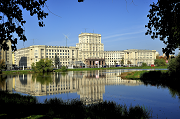
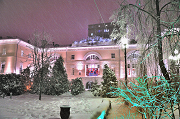
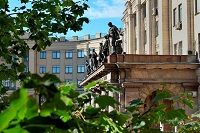
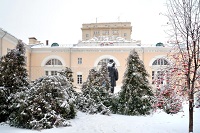
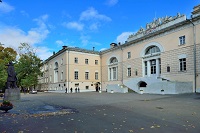
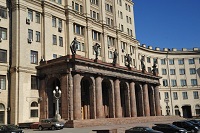
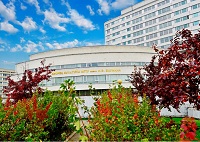
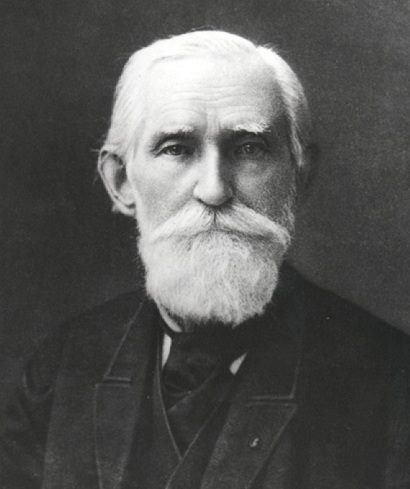

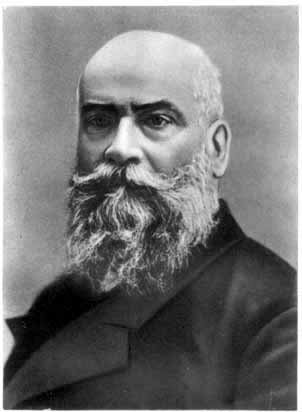
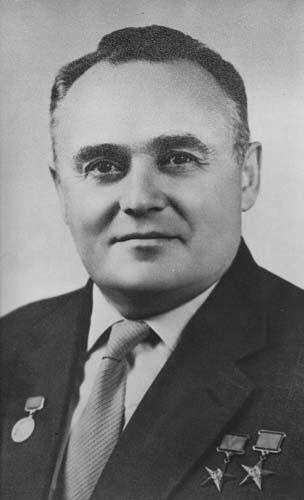
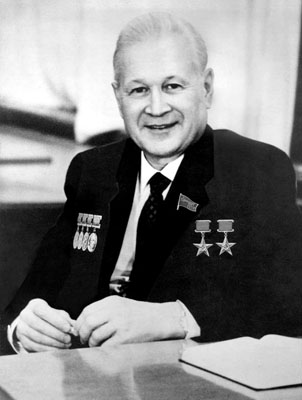
Laboratory Building of BMSTU
The Laboratory Building of BMSTU was opened in 2004.
At the opening ceremony Minister of Education Vladimir Filippov called it "a symbol of the RussiaвАЩs rebirth".
The total area of the 11-storey building is over 80 thousand sq. meters (equivalent of 11 football fields). 5 thousand students of all departments can have classes there simultaneously.
The building houses 100 lecture halls, 20 computer classrooms, 19 elevators, a library, which can store nearly 1 million books, a reading room for 700 visitors, a concert hall having almost 1,200 seats and a conference hall for 130 seats.
The Laboratory Building stands on the bank of the River Yauza and its similarity with a ship's hull explains its nickname, that is "an icebreaker".
The Fundamental Science Scientific and Training Complex (visit http://fn.bmstu.ru for the Russian version and http://fn.bmstu.ru/index.php/en - for the English version) is located on the 4th , 6th, 8th, 9th and 10th floors of the Laboratory Building as well as in the main building on 2nd Baumanskaya street.
The PIRT Conference has been held in the Conference Hall of the Laboratory Building since 2005.
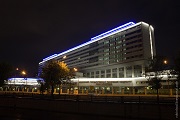
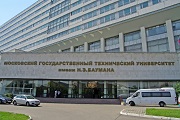
Department of Physics
Department of Physics of Bauman Moscow State Technical University (BMSTU) has worked since 1832, when Physical Study to demonstrate physical phenomena during lectures for students was created at the Craft Institution of Moscow Training House.
On the first June in 1968 the Craft Institution was reformed into Emperor Moscow Technical Specialized School and the Physical Study got a new official status as Department of General and Applied Physics. Professor A.S.Vladimirskii, who had graduated from Moscow University, headed the Department.
The brightest historical moments of the Department were linked with names of professor V.S.Shchegolyaev (the head of the Department since 1886 till 1912) and academician P.P.Lazarev (the head of the Department since 1912 till 1925).
At different times a number of remarkable scientists have worked at the Department: academician, president of USSR Science Academy S.I.Vavilov, corresponding-members of USSR Science Academy K.A.Krug and A.S.Predvoditelev, professors A.B.Mlodzievskii, A.K.Trapeznikov, A.V.Shpol'skii, N.E.Uspenskii, V.D.Zernov, K.A.Putilov.
At present the staff of the Department of Physics consists of 14 professors, 47 readers, 8 senior teachers and 7 professors, 15 readers, 7 senior teachers occupy private positions.
The main scientific directions of the Department of Physics are
- Electro-hydrodynamics (Prof. I.N. Aliev)
- Process theory of non-linear transference (Prof. A.S. Romanov)
- Nonreversible process research in natural media. Theory of precise measurements. (Prof. A.N. Morozov, amor@mx.bmstu.ru)
- Electrodynamics of moving media; experimental tests of the relativity theory and electrodynamics (Prof. V.O. Gladyshev (dekan-fn@mail.ru)
- Applied electrodynamics and radio-physics (Prof. O.S. Litvinov)
- Theory of strength and destruction for solid bodies (Prof. V.N. Bovenko)
- Optics and spectroscopy (Prof. V.S. Gorelik)
- Physical processes modeling in continuous media (Prof., Ph.D., the Winner of the State Prize of the USSR A.M. Makarov)
- Mathematical physics and mathematical modeling (Prof. L.K. Martinson)
- Physics of high-temperature processes (Prof. V.V. Gorev)
- Methods of Computational Physics (Prof. M.F. Ivanov)
- Solid State Physics (Prof. B.E. Vintaykin)
- Laser Physics (Prof. N.F. Bunkin)
- Semiconductor microwave technology (Prof. S.P. Babenko)
- Electrodynamics of inhomogeneous media (Prof. S.M. Korotaev)
- Terahertz technology, spectroscopy (Prof. S.O. Yurchenko)
- High energy astrophysics (Prof. V.L.Kauts)
- Early Universe models and an exact solutions of the Einstein equations (Prof. I.V. Fomin)
There is a laboratory for student researching at the Department of Physics.
Since 2001 the Department of Physics trains on the courses of bachelor and master degrees in Engineering Physics.
More detailed information can be obtained from the Head of BMSTU Department of Physics - A.N.Morozov (amor@mx.bmstu.ru).
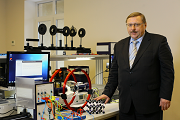
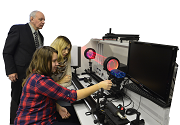
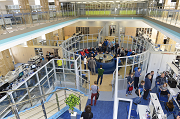
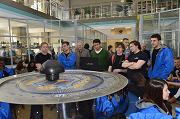
History of PIRT
The PIRT Conference is a four-day event held in September since 1988 at Imperial College in London and since 2003 at Bauman University in Moscow.
The idea of the conference was proposed at a scientific seminar by Dr. Michael Duffy from University of Sunderland, United Kingdom and initially aimed to allow free communication for foreign scientists with scientists from the former Soviet Union. It was planned to hold a conference in Kazan University (Russia), where one of the founders of non-Euclidean geometry N.I. Lobachevsky used to work.
In 1988 Michael Duffy organized the first PIRT conference at Imperial College (London), where it is held every two years. The conference is notable for the freedom of scientific views, large reports (up to 40 min), Proceedings published and the participation of Russian scientists.
In 2003 the first PIRT conference was held at BMSTU in Moscow. The conference was organized by V. Gladyshev, P. Rowlands, M. Duffy. The event was a success, and it was decided to hold a conference in Moscow every two years. The PIRT Conference was also held in Calcutta (India) and Budapest (Hungary).
The PIRT Conference features talks on multi-dimensional theory of gravity, gravitational-wave experiments, dark matter, cosmic microwave background, space anisotropy search, tests of the theory of relativity and electrodynamics.

Transport to BMSTU
How you can to get to BMSTU from International Airport "Sheremetyevo-II" to metro station ¬ЂElektrozavodskaya¬ї (three variants):
-
Take bus number 817 to the underground station ¬ЂPlanernaya¬ї (about 45 min., 21.5 km). Then go to the underground station ¬ЂTverskaya¬ї, then go to the underground station ¬ЂTeatral'naya¬ї, and go over to the underground station ¬ЂPloshchad' Revolyutsii¬ї, then go to the underground station ¬ЂElektrozavodskaya¬ї.
-
Take bus number 851 to the underground station ¬ЂRechnoi Vokzal¬ї (about 43 min., 21.7 km). Then go to the underground station ¬ЂTeatral'naya¬ї, (about 21 minutes) and go over to the underground station ¬ЂPloshchad' Revolyutsii¬ї, then go to the underground station ¬ЂElektrozavodskaya¬ї.
-
High-speed trains вАЬAeroexpressвАЭ depart from Sheremetyevo Airport to Belorussky Railway station every 20вАУ30 minutes. Travel time is 30вАУ40 minutes to the underground station ¬ЂBeloruskaiya¬ї. Then go to the underground station ¬ЂTeatral'naya¬ї, (about 7 minutes) and go over to the underground station ¬ЂPloshchad' Revolyutsii¬ї, then go to the underground station ¬ЂElektrozavodskaya¬ї.
From station ¬ЂElektrozavodskaya¬ї to BMSTU.
From station ¬ЂElektrozavodskaya¬ї walk to the Rubtsovskaya nab., 2/18 (about 20 minutes).
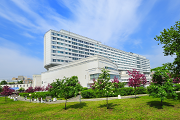
Accommodation
As BMSTU hasn't got a special hotel for guests, University can book a room in the hotel of Izmailovskii Tourist Complex.
The hotel is nearby the underground station "Partizanskaya" (3 station from the underground station "Electrozavodskaya").
Address: 105187, Moscow, Izmailovskoye Shosse, 71, Bldg. 3V, "Vega" Complex
(All information on http://www.hotel-vega.ru/)
Bauman University will book accommodation in hotel "Vega" for foreign participants. So it is necessary to inform us on precise dates of arrival to Moscow and departure from Moscow.
Registration Fee
- For foreign participants - 100 EUR.
- Participants should transfer the registration fee on the account (to be announced).
- The payment may be made from private individuals or institutions or organizations.
- The registration fee can be cash paid in during the conference in Moscow.
Payment on June, 29th 2015.

Auditorium
The Moscow PIRT-2015 will be held in the Study Laboratory Building of BMSTU, situated at the bank of river Yauza. Rubtsovskaya naberezhnaya 2/18.
The Hall is provided with modern equipments for presentations and has a system of synchronizing translation from Russian into English.
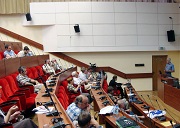
Permission, visa
To prepare the official Letter for Invitation for Russian Embassy in the other countries we need the following information from participants:
- First name, second name (or patronymic name), and surname.
- Copy of passport (by e-mail or by fax).
- Place of work (Institution, University, etc.). (If you haven't got any, please write down "housekeeper").
- Address of work (Institution, University, etc.).
- Position.
- Dates of visiting Russia (arrival and departure).
- Cities and towns to be visited (Moscow and others).
- Date of birth.
- Place of birth.
- Dates of issue and expire of passport.
It is needed to have medical insurance when you visit Russia.
Invitation
- We will send to all participants of the conference letters of invitation to report by E-mail.
- If you need the letter will be set by mail or fax.
- For foreign participants Organising Committee will preparethe official letters of invitation for the Russian Embassy.


Cultural program
The Organizing Committee plan to organize the following excursions:
- about the center of Moscow;
- to the Moscow Kremlin;
- to the Cathedral of Christ the Saviour;
- to Novodevichy Convent;
- to the Holy Trinity -St. Sergius Lavra.
It is also planned to visit the Bolshoi Theater.
Participants may inform the Committee about places of interest which they wish to visit.
The excursions will be interpreted for foreign participants.


Meal
- Coffee breaks are planned between the reports.
- Time for the coffee breaks and for lunch will be in programme of the Meeting.
- Participants can have lunch for dinning room for professors and lecturers of BMSTU in the main building (about 150 Rub. or 3-4 $).
- The Organising Committee is planning to give a dinner party for participants.


Translation (Interpretation)
- Russian and English are the working languages at the conference.
- The Organising Committee can arrange interpretation for foreign participants during official parts of the Meeting (the opening and the closing of the Meeting, and reports) and excursions.
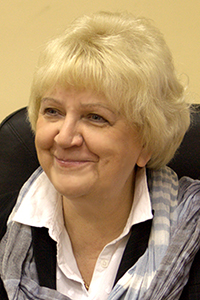
Moscow PIRT Proceedings
In results of the conference all papers will be published in the Proceedings of the Moscow PIRT Meeting (ISSN 2309-7604), which will be submitted for inclusion into Scopus database. It will be sent to all participants, in libraries, and will be available in electronic form on the website (www.pirt.info).
The articles should be thorough revised and put into shape in according to requirements.
The Proceedings will generally revised, therefore, the Organizing Committee keeps the rights for itself to use the special review of any article. In the case reviewers will be specialists of Leading Universities of Russia or aboard.







Preferred format for abstracts and papers
- The deadline for submitting papers and abstracts is 1 May 2015.
- Abstracts volume is 1 page of A4 format, article volume is 10 pages of A4 format.
- The format of files of abstracts and papers is *.doc or *.docx. An article should be formed as one file and should include: 1. The Theme Categories;
- The final edition of papers will be made in common style under checking of the Editorial Board, formed by Organizing Committee.
2. A title;
3. Information about authors;
4. Key words;
5. A brief annotation;
6. Text of paper;
7. A list of references;
8. Illustrations and tables should be numbered and titled and be included into the text of paper.
9. An expert opinion on the possibility of publishing articles in the press should be sent together with your article
Registration Form
Contacts
For all questions related to the Conference PIRT- 2015, please contact:
dekan-fn@mail.ru.
Scientific Secretary of PIRT-2015: Tyannikova Nina (Bauman MSTU, Russia).













































